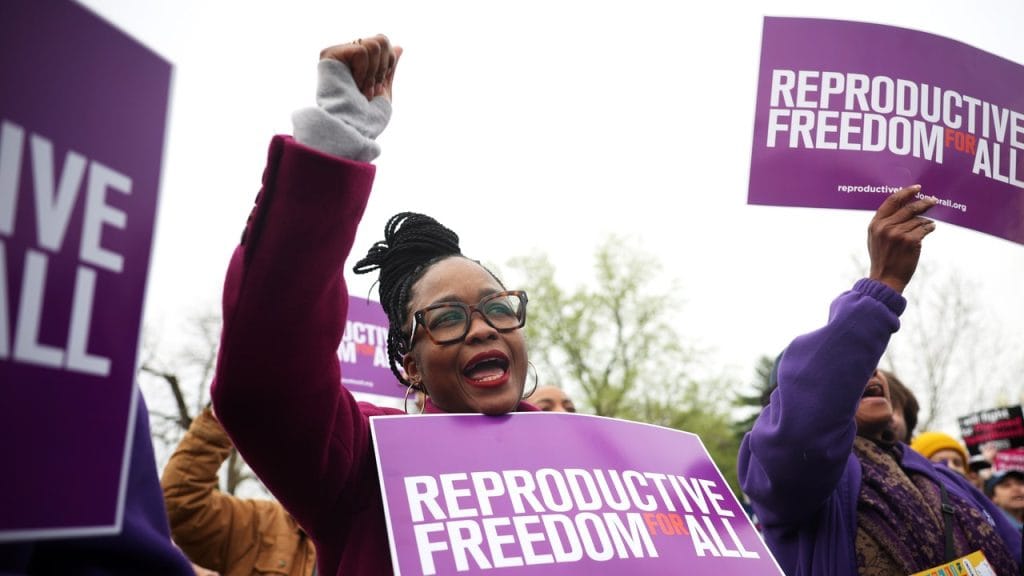
In this excerpt from her book Access: Inside the Abortion Underground and the Sixty-Year Battle for Reproductive Freedomauthor Rebecca Grant details the many ways activists moved to protect abortion access in the months immediately after Roe v. Wade was overturned on June 24, 2022.
One hundred days out from Dobbsat least 66 clinics across 15 states had closed or stopped offering abortion services. Patients were panicked, as were clinic staff, who simultaneously had to balance their grief, reroute existing appointments, and face the existential dread of the future in a country where they couldn’t do their work because half the population had been reduced to second-class citizens. Some providers had anticipated what was coming and adapted by opening new locations in “haven” states that bordered ones with bans. Whole Woman’s Health and Jackson Women’s Health Organization, the clinic at the center of the Dobbs case, had been in the process of opening new locations in New Mexico when the decision was issued, knowing their Texas and Mississippi clinics would be closed. Planned Parenthood opened a new location in Carbondale, Illinois, to service surrounding areas under bans, as did CHOICES, an independent clinic based in Tennessee. Carbondale had become an oasis of sorts because it was situated in the vicinity of Missouri, Arkansas, Mississippi, Tennessee, Indiana, and Kentucky, and three-quarters of patients who sought care there came from out of state. Trust Women in Wichita, Kansas, which before Dobbs had also provided abortion care at a clinic in Oklahoma, increased the amount of aid it distributed to patients from $30,000 to $40,000 per month in the spring of 2022 to more than six times that — $250,000 each month — by the end of the year.
This level of financing was necessary not only because clinics were seeing a higher volume of patients, but also because the limitations to access enforced by Dobbs were pushing people later into pregnancy before they could get to appointments. This meant procedures were even more expensive and time-consuming, putting a strain on patients, clinics, and abortion funds alike. (Aid programs like Trust Women’s and abortion funds were also instrumental in interrupting this cycle by helping people access care earlier on.) The clinic staff also noticed that more patients were opting for surgical procedures — which only took 15 to 20 minutes, not including travel, wait, and recovery time — even if they were eligible for the medication, out of concern that completing the medication abortion process — which could take a few days — in their home state would put them in legal jeopardy.
To bridge gaps in the new geography, other providers got creative with how they delivered care. The founder of Just The Pill, Julie Amaon, who had launched the telemedicine service in 2020, set up mobile abortion clinics that traveled around rural areas to reduce the distances people had to travel to pick up pills. (Planned Parenthood also established a mobile clinic program.) “We can go wherever the need is greatest, so that means less traveling for our patients, it means that we can quickly adapt to the courts, to state legislatures and the markets,” Amaon told NPR. “I think that having these mobile and pop-up clinics — whatever the next iteration is — is just a thing that we’re going to do . . . to help expand access.”
In an echo of Rebecca Gomperts’s strategy, one American doctor even announced her intention to establish a mobile clinic aboard a ship. Dr. Amy “Meg” Autry had been mulling the idea for years as attacks on reproductive rights had escalated, particularly in the South, where she had grown up. In parts of the country with the strictest gambling laws, there was a long tradition of casino boats that allowed gambling on the water where it wasn’t legal on land, and she wondered if the same principle could apply to abortion care. Autry had not been familiar with Women on Waves at the time, but when she started sharing her idea, people told her to reach out to Gomperts, who herself had once looked into providing care on the Mississippi River and concluded it wasn’t feasible. After conversations with maritime lawyers, Autry arrived at the same conclusion and redirected her attention toward the Gulf of Mexico, which included swaths of federal waters where state law did not apply.









